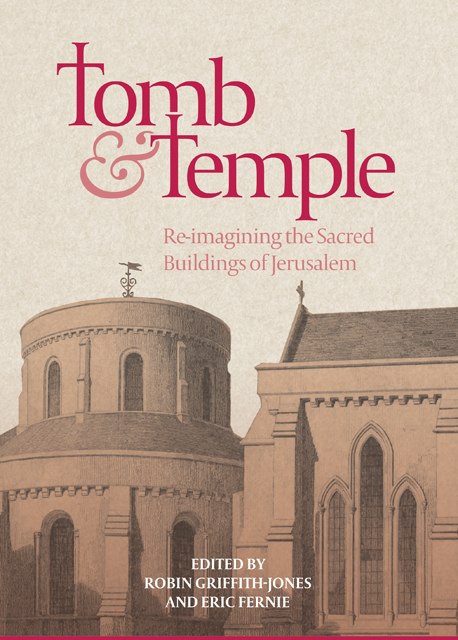Book contents
- Frontmatter
- Contents
- Illustrations
- Preface
- Contributors
- Abbreviations
- Editors’ Note
- Introduction
- Part I Re-presenting Jerusalem
- Part II The Church of the Holy Sepulchre
- Part III The Noble Sanctuary / The Temple Mount
- Part IV The Orthodox Churches
- Part V Round Churches in the West
- Appendix: The Knights’ Effigies: Newly Discovered Drawings by John Guillim, c. 1610
- Epilogue
- Index
- Already Published
14 - The Origins and Meanings of the Ethiopian Circular Church: Fresh Explorations
Published online by Cambridge University Press: 17 January 2023
- Frontmatter
- Contents
- Illustrations
- Preface
- Contributors
- Abbreviations
- Editors’ Note
- Introduction
- Part I Re-presenting Jerusalem
- Part II The Church of the Holy Sepulchre
- Part III The Noble Sanctuary / The Temple Mount
- Part IV The Orthodox Churches
- Part V Round Churches in the West
- Appendix: The Knights’ Effigies: Newly Discovered Drawings by John Guillim, c. 1610
- Epilogue
- Index
- Already Published
Summary
Ethiopia’s circular churches are so much a part of the country that most nationals as well as visitors take it for granted that they are simply the normal form of the country’s churches. This ignores the long tradition of basilicas, which used to be the norm from the very beginning of Christianity in the northern kingdom of the Aksumites in the fourth century up until the end of the fifteenth. The round churches, then, pose a cluster of questions: when did they first appear, and why; and – given that they represented a major liturgical change – on the basis of what precedent or authority?
The conception of these round churches is significantly different from the conception of earlier churches in Ethiopia. These original elements are our first source of information; they may help us explain further when and particularly why the round churches appeared. We will then look more closely at the rationale of earlier explanations and at the history of Ethiopia during the likely period of these churches’ emergence. Scholars have generally looked to Jerusalem for an explanation: to the Temple, or to the Holy Sepulchre. We will see that neither of these can answer our questions. We will need to look more locally, at a convergence of traditions within Ethiopia, and at possible precedents to the west, in the Sudan.
A Description Of The Circular Churches
An Ethiopian circular church is basically the association of two elements: (i) the outer circular wall – or concentric walls, on a module system – surrounded by a verandah; and (ii) a square sanctuary (Maqdas). The sanctuary is erected right in the middle of the circle, surmounted by a dome or, in the frequent case of a cubic sanctuary, by a drum. Dome or drum support the extremities of the long beams which form the structure of the wide conical roof, with their other ends resting on the peripheral wall. The sanctuary is erected on its own foundations and its floor lies several steps above the floor of the rest of the church. The area down the steps is called the Qeddest (lit. ‘the holy [place]’).
- Type
- Chapter
- Information
- Tomb and TempleRe-imagining the Sacred Buildings of Jerusalem, pp. 267 - 294Publisher: Boydell & BrewerPrint publication year: 2018



